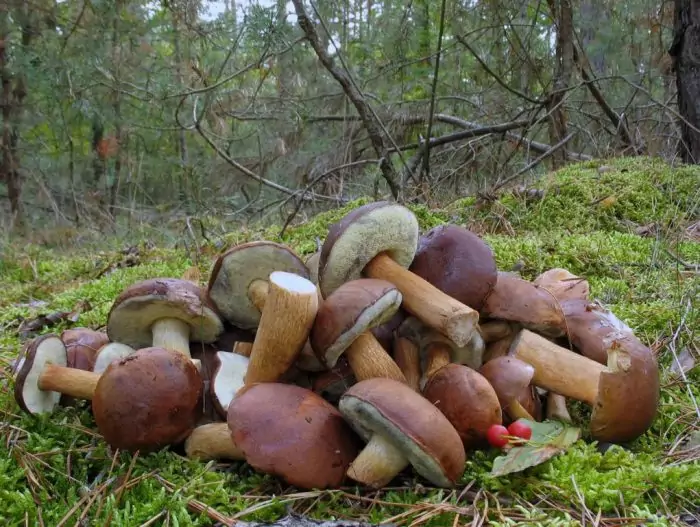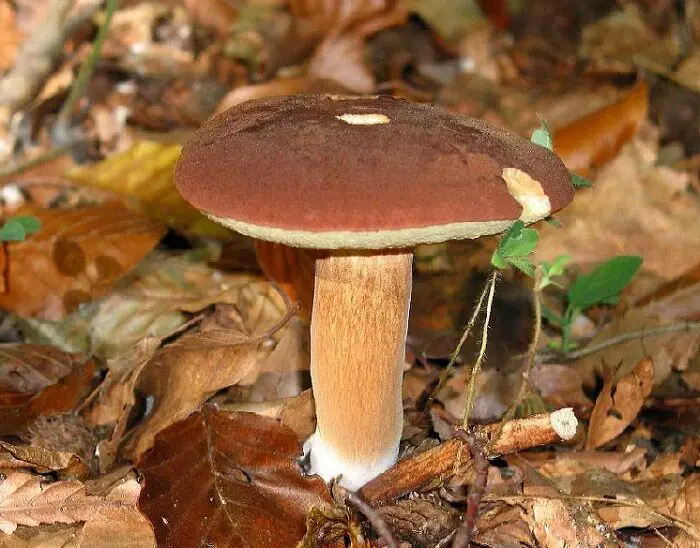The Polish mushroom, which will be discussed in this article, is so-called because it grows abundantly in Poland; it was this country that supplied this mushroom to the markets of Europe in the Middle Ages. He also has other names: Pansky mushroom, Brown mushroom, Chestnut mushroom, Belopolsky mushroom, Bruise.
Mushroom hunter really wants to know about polish mushroom picking, how to identify polish mushroom and where can be it located

Pan mushroom is widespread in Europe, in Western and Eastern Siberia, and in some places in Central Asia. It is found in central Russia, but for some reason, it is not particularly popular here. It can be found in the forests of the Far East, Azerbaijan, Central Asia, Mongolia, and even in North America, as well as in some parts of Australia. True, in recent years, Polish mushrooms have nevertheless begun to be harvested, and they have already begun to appear on the markets. They even came up with new names for them: for example, the white Polish mushroom or even the Polish boletus.
Table of Contents
Where to look for Polish mushrooms?
The Polish mushroom really often looks like a white mushroom (boletus) both in shape and in the dark brown color of the cap. Yes, and it grows in the same places as the handsome mushrooms in pine trees. But mycologists attribute it to the genus of mossiness mushrooms, and often even distinguish it as a separate species. So he is a very distant relative of the boletus.
By the way, unlike the porcini mushroom, the Polish mushrooms can grow right on a rotten stump. He also loves fire-fighting sand ditches (even very fresh ones) and grows as densely as boletus. But in the Moscow region, Polish mushrooms grow mainly in sparse spruce forests.
In general, it can be noted that usually, the Polish fungus forms mycorrhiza with conifers. It is also found in mixed forests, but you should not look for it in purely deciduous forests – here it almost never comes across.
The Polish mushroom rarely grows alone, usually in large families.
Polish Mushrooms Identification
The cap of the Polish mushroom grows in size from 3 to 12 centimeters, but there are also really large specimens that can surprise the mushroom picker – up to 20-25 cm. practically flat. The color of the cap is brown, varying from almost red to dark chestnut, depending on the place of growth.
The surface is velvety to the touch, visually matte, after rain it becomes oily and shiny. The skin does not separate from the cap. The porous surface of the cap is yellow at first, then with a greenish tint in an adult fungus, as it ages, it acquires an olive tint. Pores are small to medium. When pressed, the porous layer darkens, acquiring a color from blue to brownish-blue.
The leg is from 3 to 12 centimeters in size, up to 4 cm thick. The flesh of the leg is dense, cut without effort. The shape of the leg is even cylindrical or pointed upwards. There is a leg and pear-shaped. The surface is smooth, without grooves, occasionally with small scales, slightly distinguished by color.
The color of the stem is from yellow-brown to brown, but always lighter than the cap, often with vertical uneven stripes of a darker shade. Like a hat, when pressed, it changes color – first, it turns blue, then turns brown.
The flesh of a young Polish mushroom is quite hard, becoming softer with age. The consistency is dense, fleshy, and without voids. Milky juice does not stand out on the cut. After cutting, it oxidizes and changes color from blue to brownish, then turns white again. The pulp emits a strong mushroom smell, sometimes with fruity undertones.
Spore powder is olive-brown, olive-brown, or greenish-brown.
What do Polish mushrooms look like: a photo and a brief description
The diameter of the cap of the Polish mushroom rarely exceeds 12-15 cm. The cap is convex in shape, its color varies from almost red to dark chestnut. The tubular layer has a whitish or yellowish-green color.
The leg is more often cylindrical, sometimes pear-shaped, and grows up to 14 cm in height, and up to 4 cm in thickness. Its color can be creamy white, yellowish, or brown.

The flesh of a young mushroom is quite hard, becoming softer with age. The consistency is dense, fleshy, and without voids.
In general, Polish mushrooms can be varied both in shape and color: with a light or dark hat, with a thin or thick stem, but they have one difference that allows them not to be confused with other similar mushrooms. Their tubular layer turns blue when pressed. Not as strong as bruises, but still quite noticeable.
Very attractive for a mushroom picker are small, the size of a large walnut, fungi with a small dark brown cap and a thick light brown leg.
When to collect Polish mushrooms?
The Polish mushroom can be found from June to October, but it must be borne in mind that it does not tolerate heat and lack of rain, so it is rare in June and July. Peak fruiting occurs at the end of August – September. At this time, chestnut mushrooms grow so abundantly that it is not difficult to collect a full basket, and you get no less pleasure from this than from a basket of other well-known mushrooms.
Polish Mushroom Harm and contraindications
Unlike its “brothers”, the Polish mushroom, like its relative boletus, has no poisonous analogs. The concept of “false Polish mushroom” is irrelevant.
However, it must be remembered that mushrooms can accumulate toxic substances in industrially polluted regions, so it is best to give preference to collecting this “gift of nature” in ecologically clean areas, away from roads, factories, etc.
Polish Mushroom Nutritional value and chemical composition
Sometimes mushrooms are included in the lists of foods that are difficult for the body and are not recommended for those who lead a healthy lifestyle. But not the Polish mushroom – the following indicators (per 100 g of product) will convince you of this:
- Calorie content – 19 kcal.
- Proteins – 1.7 g.
- Fats – 0.7 g.
- Carbohydrates – 1.5 g.
Polish Mushroom Storage
Preparing a Polish mushroom is easy. The technology is no different from the processing of any other similar products. If you like pickled mushrooms prepare a marinade brine from sugar, salt, and vinegar, add your favorite spices (black and allspice, cloves, bay leaves, garlic, etc.), and store in jars.
Dry the Polish mushrooms in the oven, microwave, or in the open air – this way they retain all the useful properties, but the volume will decrease tremendously (about 10 times). You can store dried mushrooms in a dark, dry place without drafts and access to pests.
Interesting facts for Polish mushroom pickers
This mushroom has become the subject of a detailed study by Polish scientists. And it turned out that it is not only tasty but also very useful.
It contains a large amount of theanine, which:
- Helps in the prevention of cancer.
- Useful in relieving stress.
- Neutralizes the effect of caffeine and normalizes blood pressure.
- Helps to get rid of excess weight.
Brown mushroom, Chestnut mushroom, Belopolsky mushroom, Bruise.
One of the versions of why this mushroom is called Polish says that during the time of Polish rule, local residents ignored such mushrooms, while the Poles, on the contrary, preferred them. The locals noticed this and gave the mushroom an appropriate name.
Another theory is related to the fact that at one time Poland massively harvested such mushrooms and sold them for export.
Good luck with your quiet hunting!